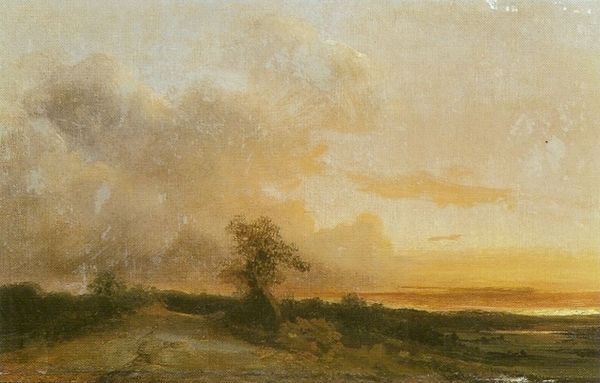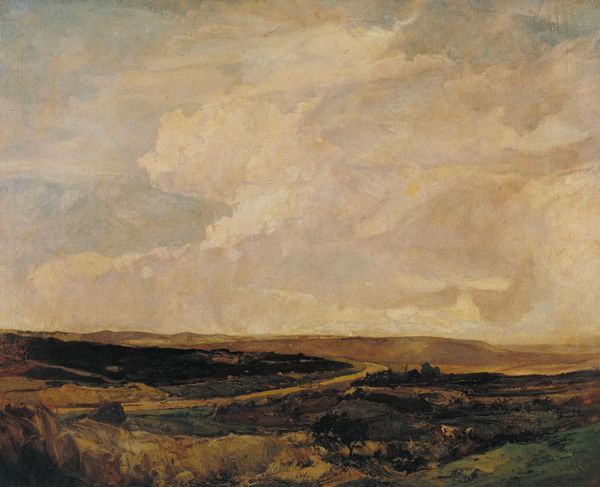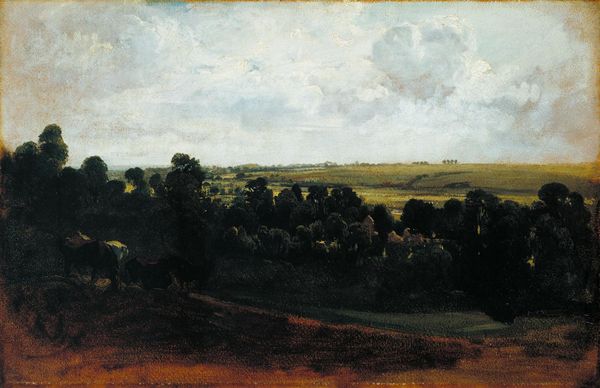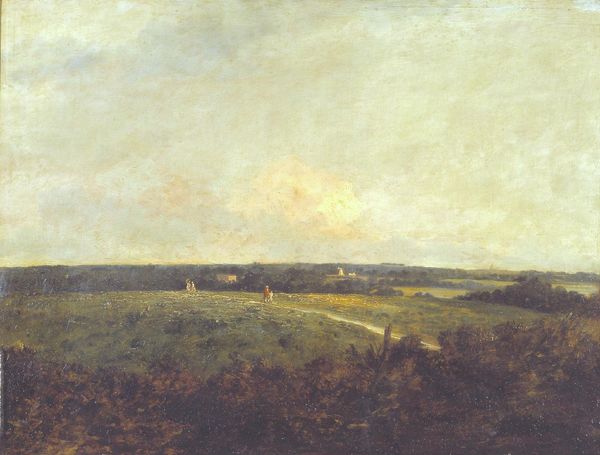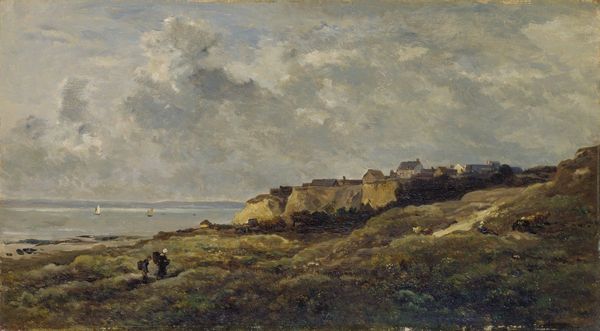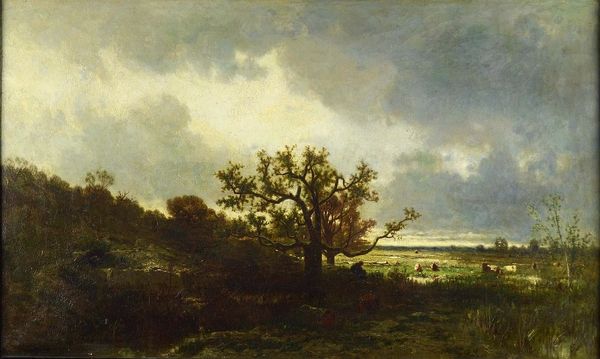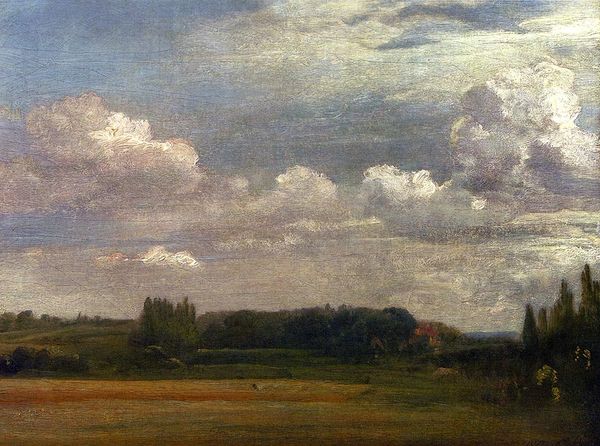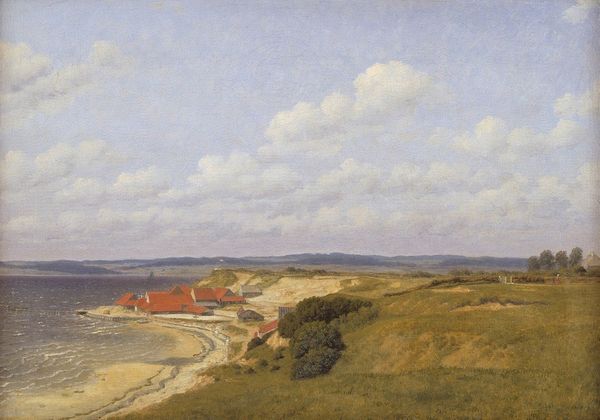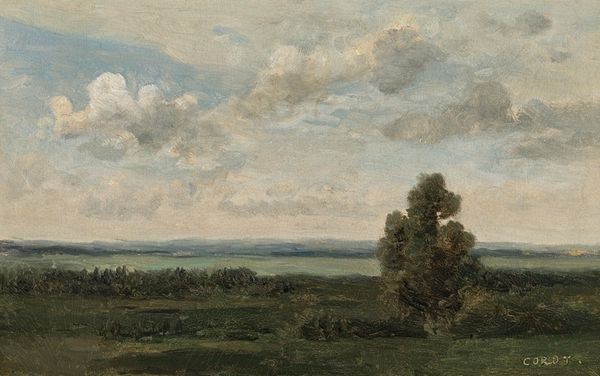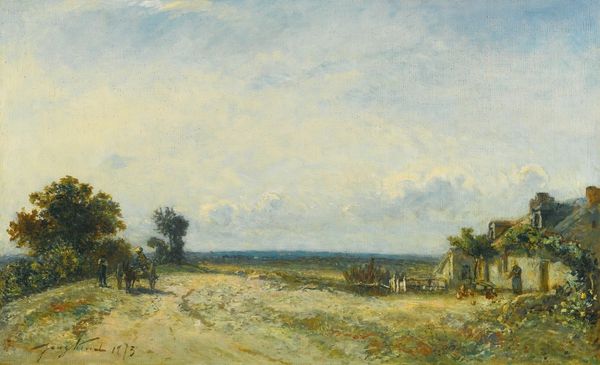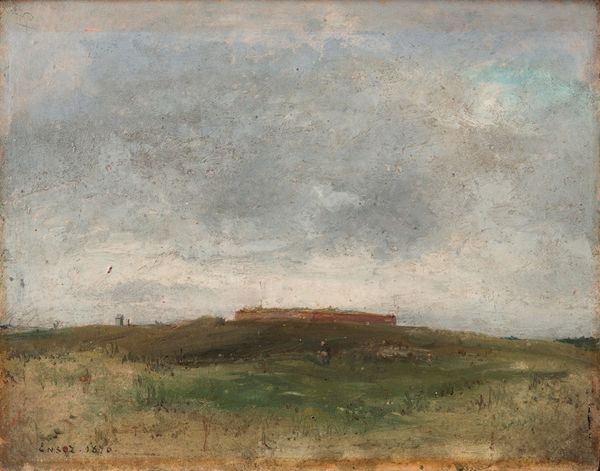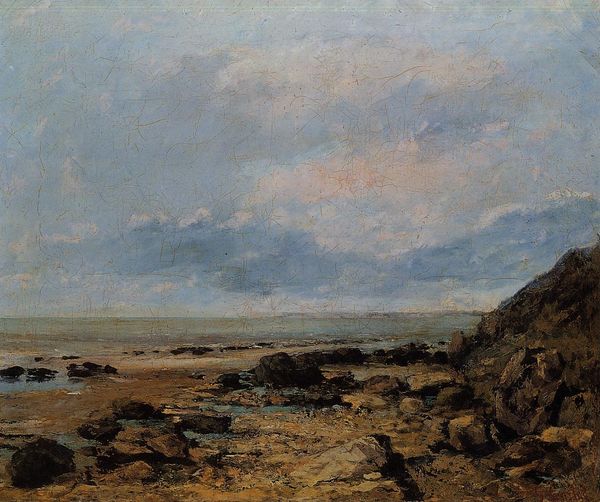
Shoreham Bay near Brighton 1824
0:00
0:00
johnconstable
Fitzwilliam Museum (University of Cambridge), Cambridge, UK
Dimensions: 14.9 x 24.9 cm
Copyright: Public domain
Curator: Looking at this lovely painting, visitors are now observing John Constable’s "Shoreham Bay near Brighton," created in 1824. It's an oil sketch that resides here at the Fitzwilliam Museum. What are your initial impressions? Editor: I’m struck by the vast sky; it dominates the scene. There’s something almost biblical about the light and the way it’s dispersed – or perhaps simply dramatic in a very Romantic way? Curator: The sky certainly feels key, especially since Constable himself spoke of skies being the "chief organ of sentiment" in a landscape. You can see he created numerous cloud studies that informed his finished paintings. This particular painting seems to tap into a shift happening in British landscape art in this period as it takes on something of a public character and reveals the nation's shifting economy. Editor: I think the visual emphasis placed on that impressive sky communicates the sublime power of nature that was characteristic of art from the period, not just any potential public messages. The beachside figures feel minute, overwhelmed. What kind of symbolism might they contribute here? Curator: In relation to British painting of this period, the presence of figures indicates that something more than a mere view is being presented. By this point, painting had become linked with commerce and agriculture. Though not explicitly displayed in this scene, you have to remember that Britain's slaving economy influenced what artists such as Constable and William Turner put on their canvases, with wealth trickling from overseas into the artistic spheres. Editor: That's quite insightful; I can't say that I had made those economic associations so explicitly with this landscape, but it's intriguing! However, there is also something almost elemental being expressed with the natural imagery here, from the figures and houses that have almost blended into their environments, back to that dramatic sky again. I believe its emotional charge resides more in our relationship to the visual memory of landscape itself. Curator: That certainly highlights a valuable perspective – our experience of nature has certainly influenced its artistic presentation. Editor: Well, reflecting on this little journey has reawakened my awe for both visuality and British Romantic painting. Curator: I agree completely. It has also underlined, for me, the intertwining forces of art, culture, society, and national interests inherent to painting in this era.
Comments
No comments
Be the first to comment and join the conversation on the ultimate creative platform.

